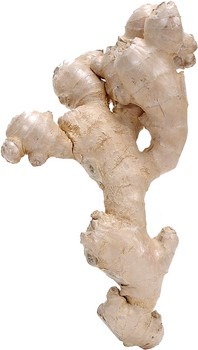Ginger, the common spice and ancient Asian remedy, could have the power to help manage the high levels of blood sugar which create complications for long-term diabetic patients, a University of Sydney study reports.
The study, published this month in the prestigious natural product journal Planta Medica, reveals the potential power of ginger to control blood glucose by using muscle cells.
 Professor of Pharmaceutical Chemistry Basil Roufogalis who led the research says extracts from an Australian-grown ginger were able to increase the uptake of glucose into muscle cells independently of insulin.
Professor of Pharmaceutical Chemistry Basil Roufogalis who led the research says extracts from an Australian-grown ginger were able to increase the uptake of glucose into muscle cells independently of insulin.
“This assists in the management of high levels of blood sugar that create complications for long-term diabetic patients, and may allow cells to operate independently of insulin,” says Professor Roufogalis.
“The components responsible for the increase in glucose were gingerols, the major phenolic components of the ginger rhizome.”
“Under normal conditions, blood glucose level is strictly maintained within a narrow range, and skeletal muscle is a major site of glucose clearance in the body.”
The pharmacy researchers extracted whole ginger rhizomes obtained from Buderim Ginger and showed that that one fraction of the extract was the most effective in reproducing the increase in glucose uptake by the whole extract in muscle cells grown in culture.
Analysis by colleagues in the University’s Faculty of Pharmacy Dr Colin Duke and Dr Van Tran showed this fraction was rich in gingerols, particularly the [6]- and [8]-gingerols.
Work also undertaken to determine how the gingerols could increase glucose uptake showed an increase in the surface distribution of the protein GLUT4. When the protein localises on the surface of muscle cells it allows transport of glucose into cells.
In type 2 diabetic patients, the capacity of skeletal muscle to uptake glucose is markedly reduced due to impaired insulin signal transduction and inefficiency of the GLUT4.
“It is hoped that these promising results for managing blood glucose levels can be examined further in human clinical trials,” said Professor Roufogalis.
The work was carried out through an Australian Research Council Linkage grant co-funded by Buderim Ginger.